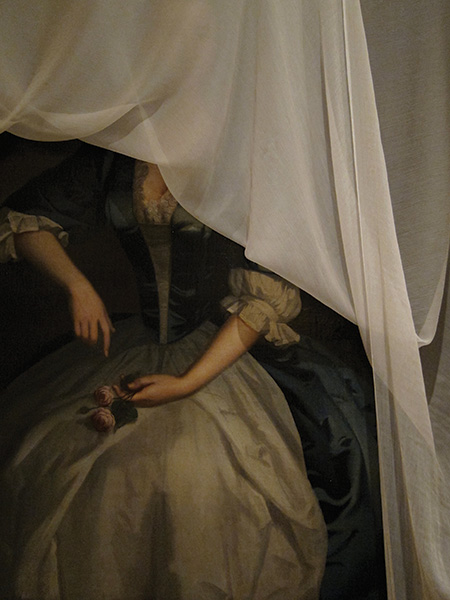Rosslynd Piggott

The relationship between works of art and objets d’art, the museum and the gallery, is one marked by desire in all its forms. Above all, it oscillates between the twin concerns of aesthetics and connoisseurship: taste. Some of the more famous examples of artists engaging with collections include Sir John Soane’s Museum in London, which has shared its secrets with artists such as Liliane Lijn, Henry Hudson and Michael Petry; Venice’s Palazzo Fortuny, which presents the art works, stage and textile designs of Mariano Fortuny alongside a Byzantine hoard of artefacts from different cultures, as well as installations by key modern and contemporary artists; while Andy Warhol accumulated ‘Andy’s stuff’ in his New York townhouse. Flirting somewhat dangerously with the politics of colonial appropriation and ‘vitrinization’, each demonstrates the ongoing allure of past material cultures, as a touchstone for artists of the present.
Following Akira Isogawa, Pascale Gomes McNabb and Romance was Born, Rosslynd Piggott brought her own infinitely refined sensibility to the William Johnston Collection, a hidden museum in the heart of Melbourne. (Access was strictly by a complimentary coach, making each trip a magical-mystery tour from the outset.) Johnston, who died in 1986 at the age of 75, established a thriving antique business after the war in Melbourne and London, buying from European stately homes needing to liquidate their assets in challenging times. By the end of his life, he had amassed an extraordinary collection of antiques, which he left under the direction of a charitable trust to establish a small house museum in perpetuity.
Piggott’s practice is driven by an acute sensitivity to the quality of things – colour, air, fragrance, material – driven by a painter’s eye. Ranging from blown-glass vials of ‘captured air’ to room-sized installations of antique Japanese silk, abstract synesthetic painting to HD video, what is consistent is her fascination with the sensual world. The artist’s intention for the Johnston collection was to create ‘both a conciliation and acknowledgement of the spirits who have lived there’; the three she focused upon were Johnston, his assistant and rumoured lover Ahmed Moussa, and Angus Winneke, a costume and set designer and a close friend, who shared the house. This ménage à trois provides the frame of reference for Piggott’s intervention, entitled Murmur (2013). Her approach drew out the underlying currents of the house as a home, focusing on touch, shadow and reflection to trace its material and psychological indices.
Playing with themes of the visible and the invisible, the ‘Blue Room’ was the first in a chromatic series of spaces: White, Green, Yellow, Grey. From an imaginary re-staging of Johnston’s room – where his first artefact, an 1811 Minton cup given to him by his grandmother, nestles on the coverlet (tea cups are found in each bedroom) – pink thread passed from an embroidered ‘A’ on the pillowslip through the chandelier, to emerge snaking across the bed of Ahmed in the room above where it finished in an embroidered ‘B’ for Bill. Reversing the common practice of the time, where personal linens of the wealthy were monogrammed, this simple inversion resonated with the first line of Sir Philip Sidney’s late 16th-century lyric poem Arcadia: ‘My true-love hath my heart, and I have his’. Indeed, Piggott selected an Elizabethan portrait of Lord Montague to be the only painting facing outwards in the room, supposedly re-painted to delete a wife; it was positioned opposite a photograph of Johnston’s mother.
The ‘Green Room’ was used for work and dining. Overlooking an exquisite garden (which Piggott closed the shutters on, to better register private affairs) the artist juxtaposed handmade floral forms with a collection of miniature female portraits. Antique Dutch decorative floral paintings echoed the floral porcelain service, as well as the video projection of a pink magnolia tree from the garden, which was refracted through another prism-like chandelier to scatter light and shadow across the ceiling.
Divas appeared throughout the house: a classical female bust turned to face a mirror; a magnificent dowry portrait of a woman from the court of Charles II; drawings and photographs by Winneke of showgirls wearing his risqué burlesque costumes; a half-veiled portrait of a Baroque noblewoman by Joseph Highmore. Piggott celebrated Johnston’s sensitivity and sensuality in equal measure; in the process, allowing her own revelry in the qualities of things to flow through these new, borrowed channels. The outcome was something like a love potion, infusing the essence of Johnston’s life and milieu with Piggott’s own rarefied sensibility. Be still my beating heart, indeed.
















